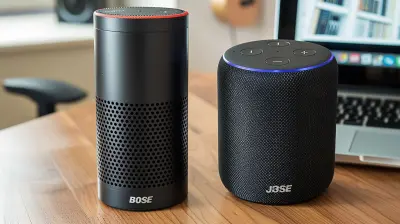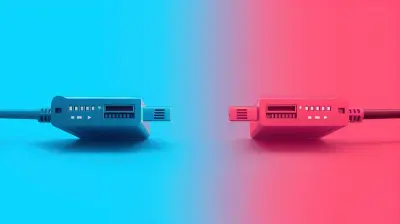The Evolution of Cloud Gaming: Are Consoles Becoming Obsolete?
3 November 2025
Gaming has come a long way from the days of inserting cartridges and blowing dust out of them to ensure they work. Today, we’re on the brink of a revolution—cloud gaming. With the rise of high-speed internet and powerful data centers, gamers can now play their favorite titles without needing expensive hardware. But does this mean traditional gaming consoles are on their way out? Let’s dive into the evolution of cloud gaming and whether it’s truly the end for consoles.

What Is Cloud Gaming?
Cloud gaming, also known as game streaming, is a technology that allows you to play games over the internet without needing high-end hardware. Instead of running the game on your local device, a powerful server handles all the processing and streams the gameplay directly to your screen.Think of it like Netflix, but for video games. You don’t need to download or install anything—you just click and play. Services like NVIDIA GeForce Now, Xbox Cloud Gaming (formerly known as xCloud), PlayStation Now, and Google Stadia (before it shut down) have made cloud gaming a serious contender in the gaming industry.

A Brief History of Cloud Gaming
To understand how cloud gaming threatens traditional consoles, let’s take a quick trip down memory lane.- 2000s – The Early Days
Cloud gaming was more of a concept than a reality in the early 2000s. Services like OnLive and Gaikai emerged, promising a future where gamers wouldn’t need expensive hardware. However, technical limitations like poor internet speeds and latency issues prevented mass adoption.
- 2010s – Cloud Gaming Goes Mainstream
Sony acquired Gaikai in 2012, which led to the launch of PlayStation Now in 2014. Around the same time, NVIDIA introduced GeForce Now, allowing PC gamers to stream their favorite games without needing powerful rigs. The idea of cloud gaming gained serious traction, but connectivity issues still persisted.
- 2020s – The Cloud Gaming Boom
The past few years have seen major tech giants like Microsoft, Google, and Amazon dive headfirst into cloud gaming. Microsoft’s Xbox Cloud Gaming is integrated into Xbox Game Pass, allowing users to play AAA titles on their phones, tablets, and even smart TVs. While Google Stadia shut down, its technology influenced the industry, proving cloud gaming is here to stay.

The Advantages of Cloud Gaming
So, why is cloud gaming gaining so much traction? Simple—it offers benefits that traditional consoles simply can’t match.1. No Expensive Hardware Needed
Gone are the days of saving up for the latest PlayStation or Xbox. With cloud gaming, all you need is a good internet connection and any device with a screen—be it a laptop, smartphone, tablet, or even a smart TV.2. Instant Access to Games
Forget downloading massive files or waiting for installations. With cloud gaming, you can click and start playing instantly. This is a game-changer for those who just want to jump in and enjoy without the hassle.3. Cross-Device Compatibility
Ever wanted to start a game on your console but continue playing on your phone? Cloud gaming makes that possible. Your games and progress sync across devices, meaning you can game from anywhere.4. No More Worries About Hardware Upgrades
Consoles and gaming PCs get outdated fast. With cloud gaming, the processing happens on powerful remote servers, meaning you’ll always have access to cutting-edge performance without ever needing to upgrade your device.5. Game Library on Demand
Subscription-based cloud gaming services, like Xbox Game Pass Ultimate and GeForce Now, give users access to huge libraries of games for a monthly fee. This Netflix-like model eliminates the need for buying individual games.
Challenges Holding Cloud Gaming Back
While cloud gaming sounds amazing, it’s not perfect. Some hurdles still prevent it from fully replacing traditional consoles.1. Internet Dependency
Let’s be real—cloud gaming is useless if you don’t have a fast and stable internet connection. Lag, buffering, and disconnections can ruin the experience. Unlike consoles, which can work offline, cloud gaming is entirely dependent on the internet.2. Latency Issues
Even with good internet, latency can be a deal-breaker, especially for competitive gaming. A minor delay in input can be the difference between victory and defeat. While technology is improving, it’s still not as responsive as playing directly on a console or PC.3. Data Usage Concerns
Streaming high-quality games consumes a ton of data. If you’re on a limited data plan, cloud gaming can become a costly affair.4. Game Ownership Concerns
Unlike physical or digital downloads, cloud gaming often means you’re renting access rather than owning the game. If a service shuts down or removes a title, you lose access—just like how Google Stadia users lost their game library when the platform closed.5. Not All Games Are Supported
Not every game is available on cloud platforms, and some developers are hesitant to fully embrace cloud gaming due to revenue-sharing models and licensing issues.Are Consoles Becoming Obsolete?
Now for the big question—are gaming consoles doomed? The short answer: not yet, but the landscape is changing.Why Consoles Still Have a Place
Despite the growth of cloud gaming, consoles still offer key advantages:- Performance & Reliability – Local hardware means games run smoothly without the risk of internet-related hiccups.
- Offline Gaming – You can play anytime, even without an internet connection.
- Exclusive Titles – Many AAA games remain console-exclusive, which keeps traditional gaming alive.
- Lower Latency – Direct processing ensures minimal input lag, which is crucial for competitive gamers.
What the Future Holds
While consoles aren’t disappearing overnight, cloud gaming is disrupting the industry. Just as physical media (DVDs, Blu-rays) gave way to streaming services, gaming could follow a similar path.Manufacturers like Microsoft and Sony are already adapting by offering cloud-based features alongside their consoles. The PlayStation 5 and Xbox Series X/S both support cloud gaming services, signaling that the gaming giants are preparing for a future where hardware becomes less relevant.
Could this be the last generation of gaming consoles? Maybe. In the coming years, as internet infrastructure improves and cloud gaming technology refines itself, we may reach a point where consoles are no longer necessary.
The Verdict: A Hybrid Future?
Rather than one replacing the other, we might be heading toward a hybrid gaming future. Consoles and cloud gaming will likely coexist for the foreseeable future. Some gamers will prefer the reliability of consoles, while others embrace the convenience of the cloud.But one thing’s for sure—gaming will never be the same again.
Final Thoughts
Cloud gaming is revolutionizing the industry, but consoles still hold their ground. While cloud gaming offers unmatched accessibility and affordability, it still faces challenges like internet dependency and latency issues.For now, consoles aren’t going anywhere. But as technology advances, we might eventually say goodbye to traditional gaming hardware. Whether that’s a good or bad thing depends on how well cloud gaming can overcome its current limitations.
So, what do you think? Are you ready to ditch consoles for good, or are you sticking to traditional gaming for now? Let’s talk in the comments!
all images in this post were generated using AI tools
Category:
Tech NewsAuthor:

Gabriel Sullivan
Discussion
rate this article
1 comments
Casey Howard
Great insights! It's fascinating to see how cloud gaming shapes the future of gaming.
November 3, 2025 at 5:19 AM


